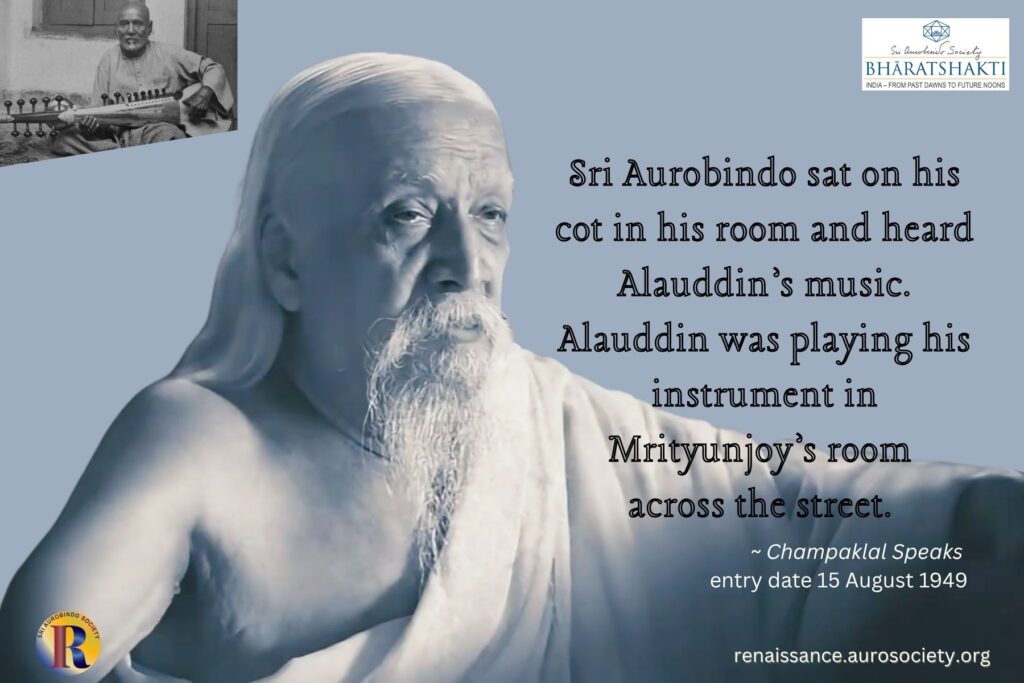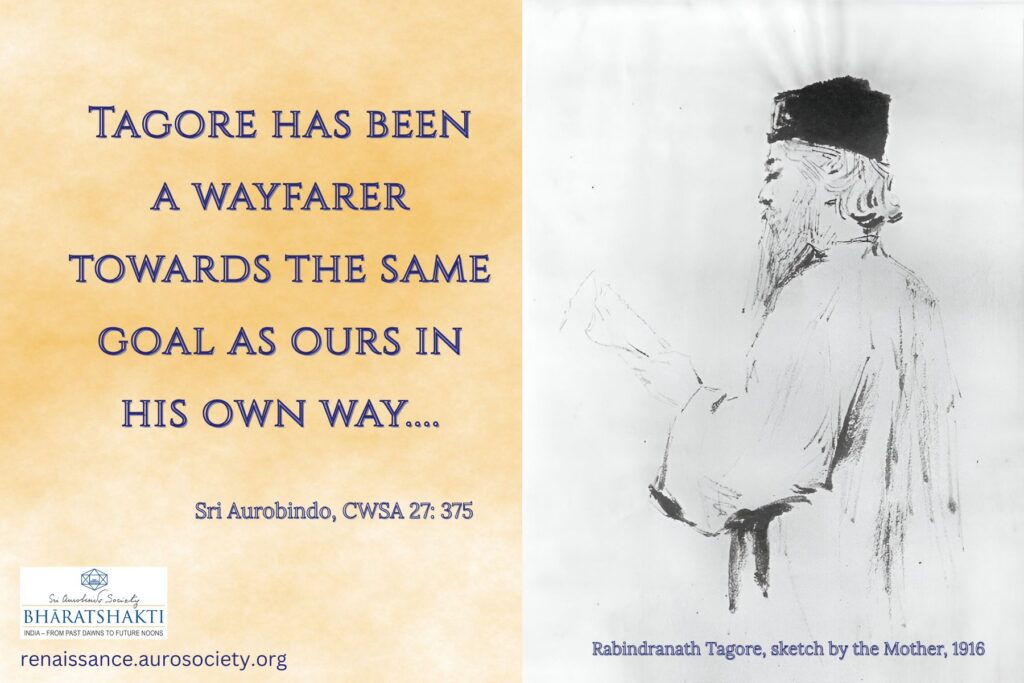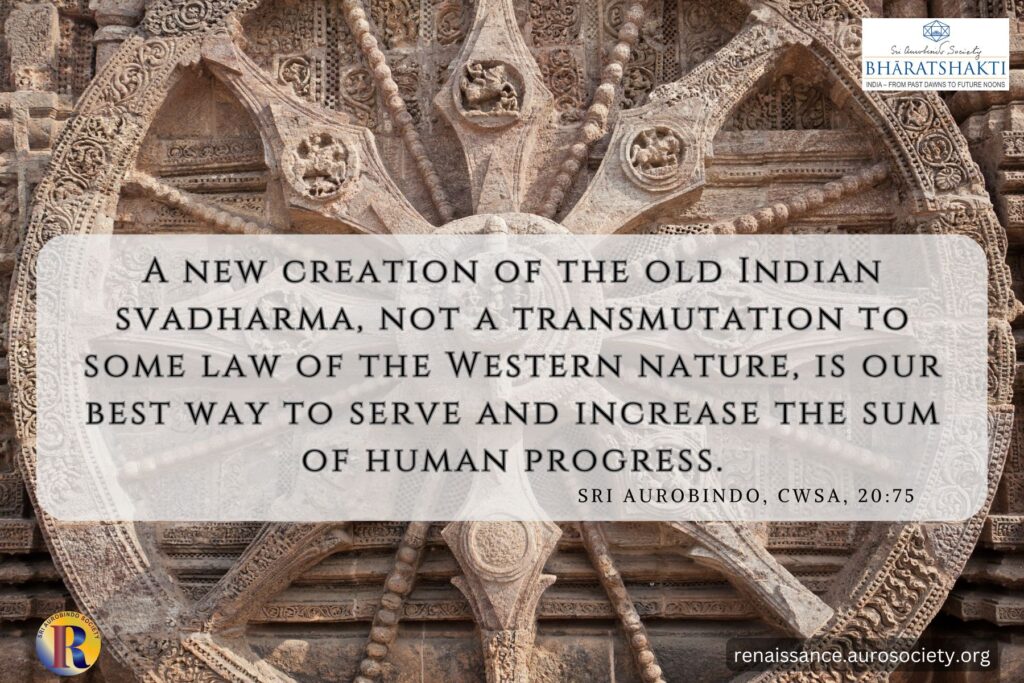CONTINUED FROM PART 1

The Nature of the Indian Genius
The genius of India can never be satisfied with a sort of agnostic spirituality and negative mysticism; nor with an endeavour at dissolving the variety and diversity of her mental and physical existence; nor, again, with setting at a discount the urge to realise a dynamic divinity, a spiritual and mystical light turned towards the flowering of noble and beautiful world-values.
Non-violence and humanitarianism are also not the last word of the Indian ethical mind: a manifestation of God in humanity is the main ideal.
Humanity is not a supreme value in itself. Non-violence and compassionate fellow-feeling are fine virtues but they are not the utter goal of the ethical life. The utter goal is nothing else than a general avatar-hood, so to speak, which acts according to a spiritual and mystical truth within and which can even appear at times to be violent and ruthless. Just as Sri Krishna appeared on the battlefield of Kurukshetra where humanity stood divided into an army of the Divine and an army of the Diabolic.
Further, the Indian genius is not democratic in the superficial modern manner.
The whole world is indeed to be embraced by the individual’s consciousness and the good of mankind at large has indeed to be worked for by every member of organized society; but the foundation of this democracy is in realising the God who is the One Superhuman in all that is human, and ever to this high, rare, extraordinary realisation the common mind is to be called, and each altruistic action must spring from that luminously aristocratic experience.
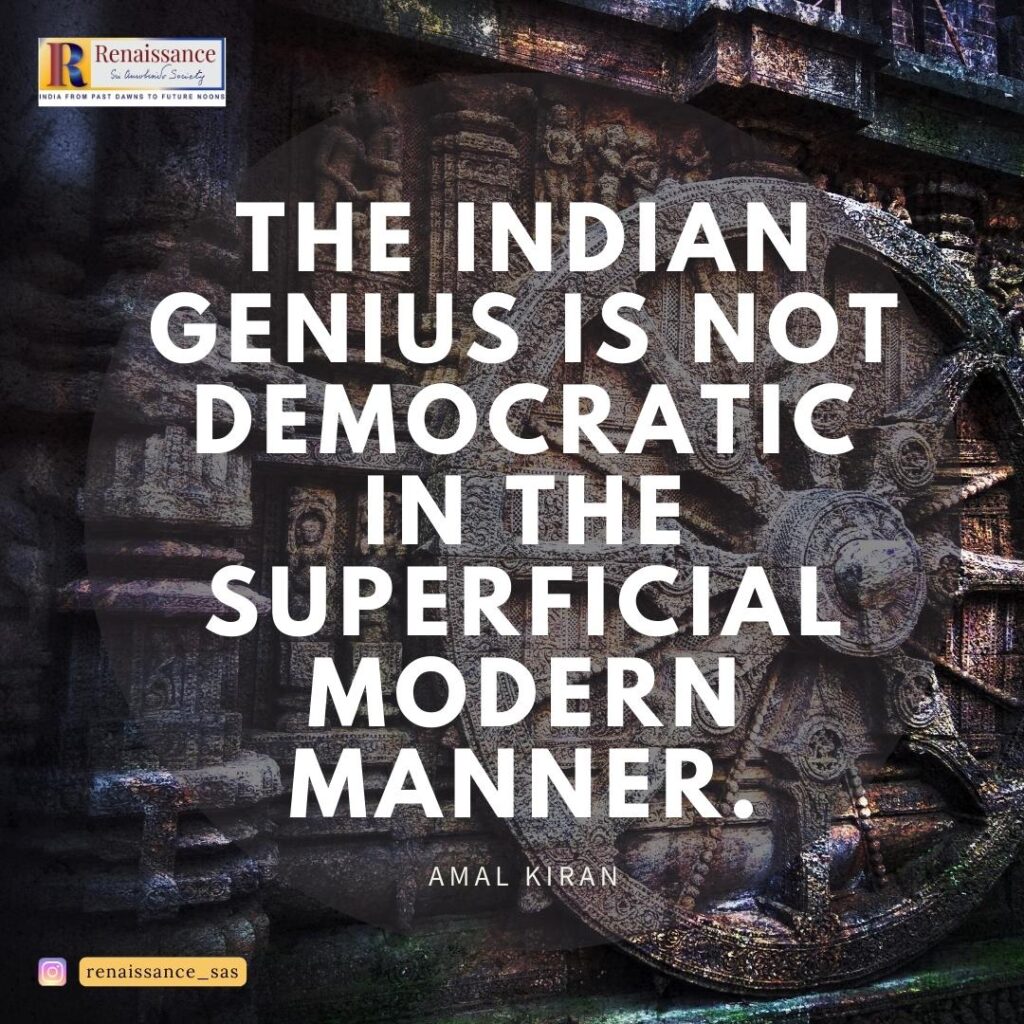
The true Indian democracy, therefore, must lay stress not on the mere common man, not on mankind as it is in the majority. It must lay stress on the man of God, the Saint and the Seer, mankind as it is in the finest few and as in the majority it ought to be.
In the light of the above considerations we cannot help feeling that the true flag of India is yet to be found.
This does not mean we should fail to respect and love the ensign we have before us. The ensign is set up with the purpose of drawing our thoughts to the wonderful being of our country and when we lift our eyes to its flight above our heads we look not so much at its pattern as at its general figuration of the triumphant spirit of our motherland.
“Jai Hind” or “Bande Mataram” is what our hearts cry out, and through the green and white and saffron and through the Asoka wheel we move really towards that spirit. For the sake of that spirit which the flag-makers sought to catch and keep like a beacon for the Indian multitudes, we must always give the most fervent response of patriotism even though the pattern may be inadequate to our country’s inner greatness.
But the flow of our devotion must not drown the fact that extremely desirable is a pattern with deeper significances, with more inspiration from the soul of this country whose life-breath has been the Divine and the Infinite.
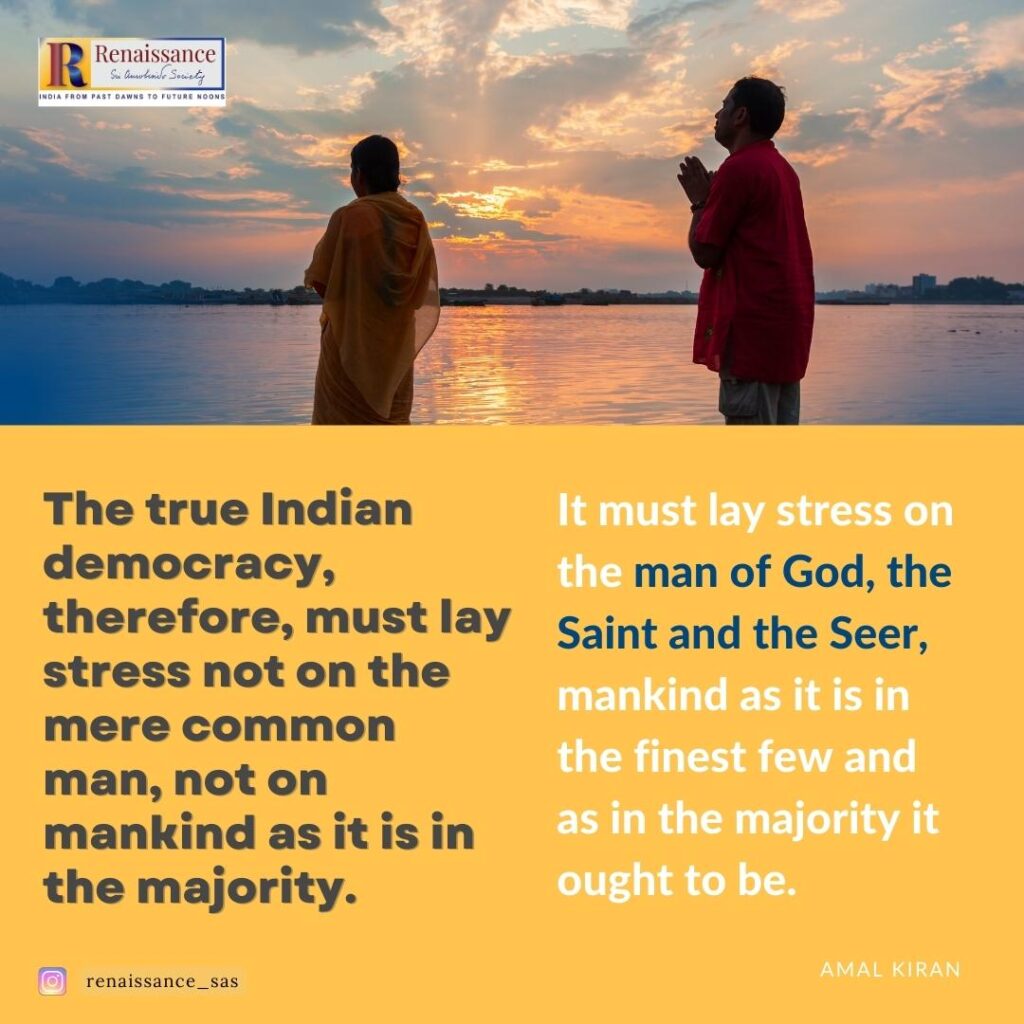
The Ideal Flag
Luckily, in our opinion, we do not have to cast about for the right pattern. We already possess it in the symbolisation made of INDIA’S SPIRITUAL MISSION by the greatest spiritual figure of our day.
The symbolisation by Sri Aurobindo uses a simple yet subtle combination of the three colours that we associate most with the overarching heavens—blue, silver and gold.
It uses also the most beautiful and ancient Indian emblem of divine revelation, the lotus, but with a stylisation of it into a circle to create the impression of fullness and completeness. And there is a further packing of significances by making this circle concentric with two others within it of different dimensions, the innermost circle having nothing inside it while the middle has four divisions like petals and the outermost has twelve petallic divisions.
Golden—suggestive of luminous sovereignty—against a background of silvery blue is the lotus here.
The Seed-Shakti of the Divine Mother, creatrix of all, is pictured by the small centre in which all things seem to be held secretly concentrated. Out of this, four primary creative powers are shown as breaking: these are Maheshwari, Mahakali, Mahalakshmi, Mahasaraswati—goddess-personalities of wisdom, puissance, harmonious beauty, flawless organisation. These personalities are then depicted as putting forth twelve manifesting powers that work within the periodic time-process. The supreme infinity that is the all-containing and all-supporting Spiritual Self.
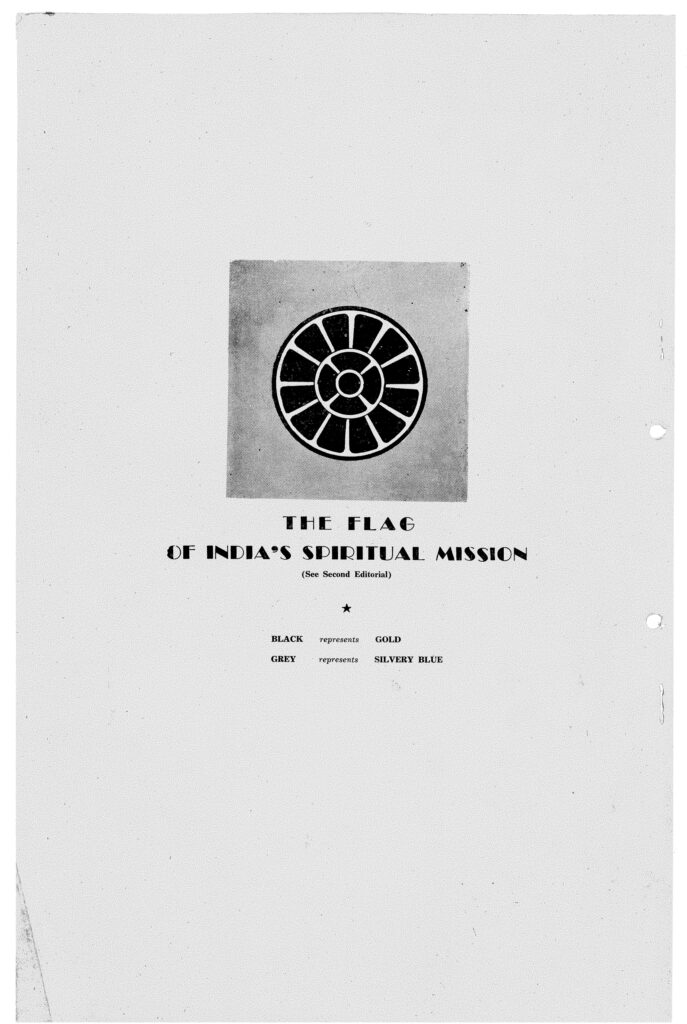
The foundational mystery from which the Divine’s creative and manifesting marvel stands out, is the background of silvery blue, in the centre of which the three-tiered lotus is placed. This silvery blue background is a square piece, each side of the square bearing to the diameter of the lotus the ratio of 6:12.5. This ratio gives the right balance: the four equal sides suggest a perfection of being, an omni-competence for a world-structure that can face and meet all demands.
Here is a flag charged with India’s authentic mission, the mission of rendering victorious the Divine Mother, the Infinite Self and Shakti.
In this flag we have the suggestion not only of a sky with an ethereal lotus poised in it, but also of a stretch of water with an earthly lotus afloat. The ever-existing ideality above and the secret wonder that is to be revealed below are both compassed in a satisfying symbolism. The full-blown circular lotus with two rows of petals seems to be the true inspired emblem which was hovering, so to speak, in the nation’s inner mind but which through an insufficiently receptive imagination our leaders miscaught as Asoka’s wheel.
Here too is a wheel-like design, but suffused with a superb meaning attuned to the Rig-Veda which is hidden in the heart of man and which the Indian consciousness has heard down the ages.
Foremost here of all suggestions by the wheel-like design is the Presence of God as intuited by our country’s Seers and Saints—the Presence of God within a lotus-chakra that is the centre of a luminous life on every level of the profound recesses of our subliminal and supraliminal being. In the colours, too, though we may see several implications pertaining to our outer existence, the master implication by virtue of this particular pattern remains the Infinite and the Divine.
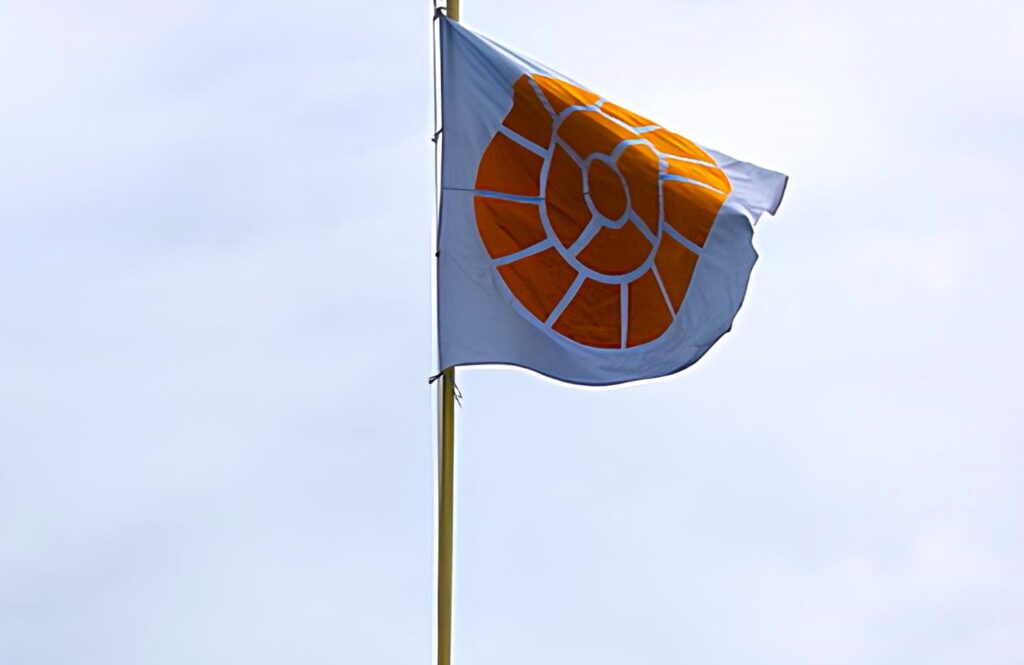
In Sri Aurobindo’s flag of Mother India and her spiritual mission we have also the promise of India’s unity.
For, the genuine indefeasible unity can come only of a sense in all men of the one God within, the God in whom alone are eternal liberty, equality and fraternity, the three grandest ideals that a country can pursue, the sole ideals that can make one harmonious country of all the countries constituting the world.
If India wishes to be great by fulfilling her true genius and if she wishes to be the missionary of a world-union, no flag but this can ever be the symbol of her victorious emergence as an independent nation.
READ PART 1

~ Design: Beloo Mehra

